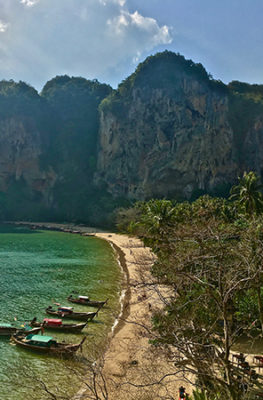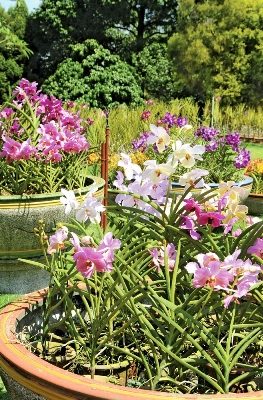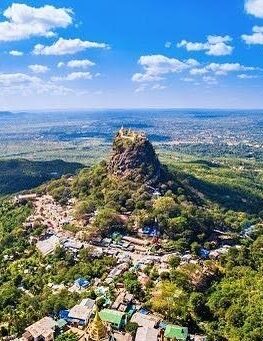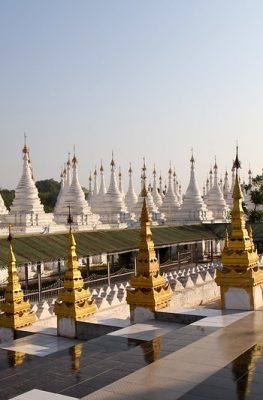Published on January 11, 2016
Fascinating and enigmatic, Burma – or Myanmar as it is now known as – was once a land rich in jade, teak and other natural resources. There is this to be said for the lack of economic development here; it has ensured that much of the ecosystem remains intact. The abundant natural wealth includes precious gems;the rare “pigeon blood-red” ruby comes from Burma, as does the royal blue sapphire. Virgin tracts of land play host to a multitude of flora, including an exotic variety of orchid. Indeed, at one point, Burma was the world’s largest exporter of rice.
Surrounded by Bangladesh, India, China, Laos and Thailand, this beleaguered land has been beset by invaders. The British, who pretty much trampled thither and yon in the Asia Pacific region, strewing dissent and strife wherever they went, colonised Burma as well; it must be said though, that it became the second wealthiest country in south-east Asia under British rule. However, during World War II, the Brits killed this goose that laid their golden eggs by destroying many of the mines and other riches to keep them from falling into Japanese hands when the latter entered the fray.
The famous British penchant for nonchalantly renaming places whose names they couldn’t pronounce, led to ‘Burma’ which reverted to ‘Myanmar’; in any event, both names are taken from the majority ethnic Bamar group. The capital city, Yangon, was renamed ‘Rangoon’ which subsequently reverted to its original ‘Yangon.’ However, in 2006, the country received a new capital city called ‘Naypyidaw’ or ‘City of the Kings’ although Yangon still remains the largest city.
Putao lies in the northern-most part of Myanmar, at the foothills of the awe-inspiring Himalayas. It is a remote, almost desolate area of steep, rocky trails and verdant, virgin jungles through which the brilliant emerald Nam Lang river winds, eventually meeting the Irrawaddy. This remains one of the most untouched environments in Asia, undisturbed by the trappings of civilization such as concrete skyscrapers. The only towering element here is the forbidding, craggy mountains. Take a raft and meander lazily down the placid river, watched by the beady, quizzical eye of a loitering heron before it dips its long beak into the waters for a quick fish dinner. Far from the madding crowds, the quietude of the day enfolds you; the calm occasionally broken by a passing bamboo raft steered by a grinning local.Putao originally was home to just a few indigenous tribes. In 1949, as Mao asserted his rule over China, American missionary J Russsel Morse left the Chinese province of Yunnan along with thousands of his Church of Christ Lisu parishioners, to set up base here in Mulashidi. The sprawling ruins of his mission still exist to this day.
The serenity and complete stillness here is like balm to the soul. The inescapable, harsh reality is that we crave these moments of being awestruck at Nature’s beauty and yet we are single-minded in our destruction of the same, only to make way for more concrete jungles and technological marvels. Truly, the world is standing on its head; we took perfectly natural food that grew out of the bounty of the earth, spoilt it with enough pesticides and chemicals and then, when we began to get sick, we have come full circle to those same “organic” foods that now ironically cost an arm and a leg!
Where the Nam Lang broadens out, one can see the thatched-roof bungalows of the Malikha Lodge, shrouded by bamboo groves and sheltered under the snow-capped Khamti Mountains.Open for business from October through April, the lodge is the creation of Belgian-born and now Kuala Lumpur-based designer Jean-Michel Gathy, who also designed the Aman Resorts. Lovingly crafted from local hardwood and with the traditional palm frond thatching, each of the twelve bungalows with private terraces are equipped with espresso machines, hot tubs and wood-burning stoves. It has got to be one of the most soothing experiences to return here after a chilly dunking while out river rafting, and be pampered by the lodge staff with teak tubs filled with steaming hot water and flower petals.
The lodge is run on generators, as most of the area is still without electricity. Come the night and one feels as though one is communing with the galaxy; in the pitch darkness when the generator is switched off, the stars shine down with a clear, fierce brightness, bathing the valley with their twinkling brilliance. The local people tend to turn in early, still guided by the clock of the sun and the moon. Dawn comes early too, ushered in by a rooster’s demanding call. Wood is chopped and smoke begins to curl from cooking fires and, as the first rays of the sun lighten the horizon, the little tableau of people, babes and animals comes alive. It’s a tough choice between waking up to see God’s masterpiece at work, or huddling under the quilt for some more cosy moments, especially when the staff sneak into the room to light the wood stove again.
After a splendid breakfast, there’s loads of choices on how to spend your day. Should you head to Putao’s outdoor market? Ride an elephant? Take off on a trek to find some wild orchids? Go on the river rapids again? Or…why not just relax around the fire in the lounge, contemplate life, get a spot of reading in, or head for a massage (first massage is complimentary for every guest.)
The Malikha Resort is affiliated with the Aureum Palace Hotels & Resorts and Myanmar Treasure Resorts, a consortium of five-star properties controlled by the Htoo Group of companies, whose chairman is prominent businessman U TayZa. Comprising of twelve properties in all, which includes the elegant Kandawgyi Palace in Yangon and the Popa Mountain Resoirt near Bagan, the group is definitely a significant cog in Myanmar’s hospitality wheel.
Tourism is picking up in the tiny country, especially to Mandalay, Yangon, Putao, Inle Lake, the ancient city of Bagan and beaches such as in Ngapali and Mergui, for example. A growing number of visitors are attracted to the untouched natural beauty, the rich Buddhist culture (Myanmar has hundreds of stupas, indeed, Mandalay would have been the site of the world’s largest stupa, had it ever been completed) and the simple, kind-hearted Burmese. Jaded from the glitz and glamour of south Korea, Hong Kong, China and the other neighbours, tourists find it uplifting to visit Myanmar for a culturally enriching experience of an ancient land.






